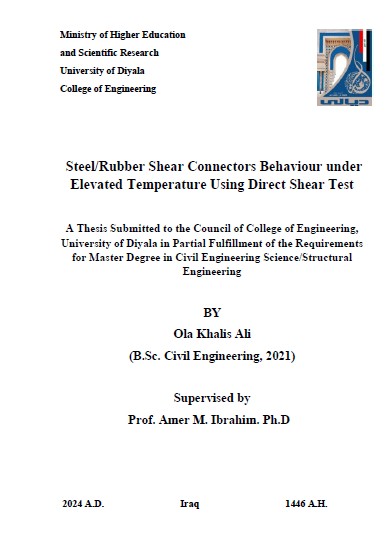Shear connectors are the most important part of the composite structural members as they connect two different materials with each other and play an essential role in transferring shear loads and distributing them among the parts of the composite member. Therefore, the process of developing and improving its behaviour is very crucial and worth researching, especially in structures exposed to earthquake and fire conditions.
This study investigates improving the behaviour of steel shear connectors in composite structures using rubber coverings, particularly under high temperature. Twenty-seven specimens cast and tested under static loading using direct shear test. Variables included concrete compressive strength (26 MPa and 55 MPa), rubber thickness (50%, 75% and 100% of the bolt diameter), rubber shape (cylindrical and elliptical), and rubber location (nut, mid and head of bolt). The effects of high temperatures (100 and 200 ) were also studied.
The direct shear test is one of the simplest tests used to measure the shear strength of soils, and in some studies it is used to check the shear strength of reinforced concrete material. But in this study, this test will be used to measure the shear strength of bolts which connecting two materials.
The main findings show that rubber increases the deformation of the shear connectors before failure, improving shear strength, durability and ductility. The optimal rubber thickness is 50% (4 mm) of the bolt diameter, increasing longitudinal displacement by 54% and shear strength by 20.9% with normal strength concrete.
For the effect of temperature, the temperature 100 °C has a positive effect, especially with high concrete strength. The temperature 200 °C has a negative effect on the shear strength and deformation due to increased connector softening. After using more than one shape and location of the rubber, it is concluded that the shape of the elliptical rubber is better than the cylindrical shape in terms of increasing strength by 155% and deformation by 48%.
The optimal rubber location is at nut, between the concrete and steel because rubber is strong in compression and weak in tensile areas.




